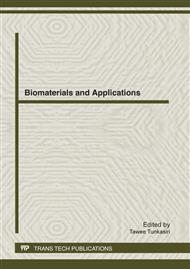p.575
p.579
p.583
p.587
p.591
p.595
p.599
p.603
p.607
Use of Response Surface Methodology for Phenolic Antioxidant Extraction from Lotus (Nelumbo nucifera Gaertn.) Pod Pericarp
Abstract:
The pod of lotus (Nelumbo nucifera Gaertn.) was value-added by using as raw material for phenolic antioxidant extraction using conventional shaking method. The pericarp part of lotus pod gave the significantly highest values of extractable phenolic content (EPC), flavonoid content and DPPH radical scavenging activity which were equal to 27.15±1.74 mg gallic acid equivalent (GAE)/g dry weight (dw), 0.59±0.04 mg quercetin equivalent (QE)/g dw and 0.65±0.02 mg trolox equivalent antioxidant capacity (TEAC)/g dw, respectively. Response surface methodology (RSM) was further employed to optimize the extraction conditions of phenolic antioxidant from the pod pericarp. Three independent variables, i.e., ethanol concentration (X1), shaking speed (X2) and extraction time (X3) were investigated through two responses of EPC and DPPH radical scavenging activity. The statistical analysis indicates that the three variables and the contribution of quadratic model had significant influence on the all responses (P<0.05). The optimum extraction condition was provided as follows: ethanol concentration 77.6%, shaking speed 223.4 rpm and extraction time 5.2 h. Under the optimized condition, the predicted values of EPC and DPPH radical scavenging activity were 30.00 mg GAE/g dw and 0.74 mg TEAC/g dw, respectively. This could be hence applied in industrial phenolic antioxidant extraction of inedible pericarp of lotus pod.
Info:
Periodical:
Pages:
591-594
Citation:
Online since:
April 2012
Authors:
Keywords:
Price:
Сopyright:
© 2012 Trans Tech Publications Ltd. All Rights Reserved
Share:
Citation:


